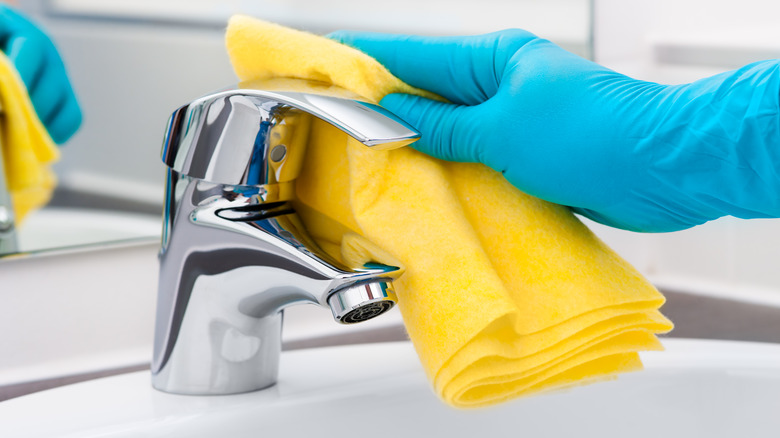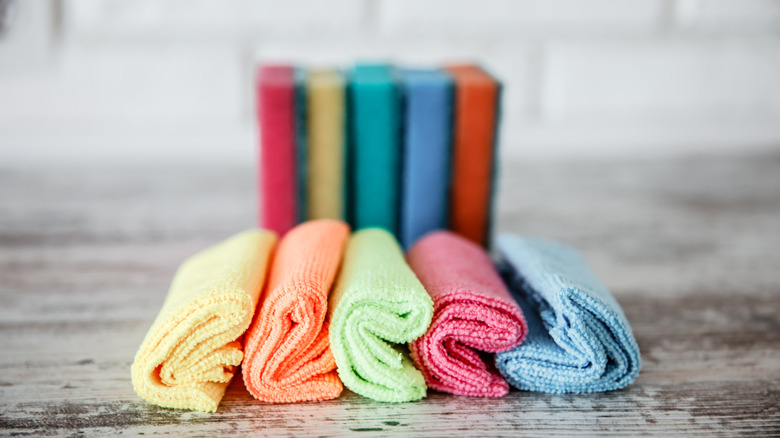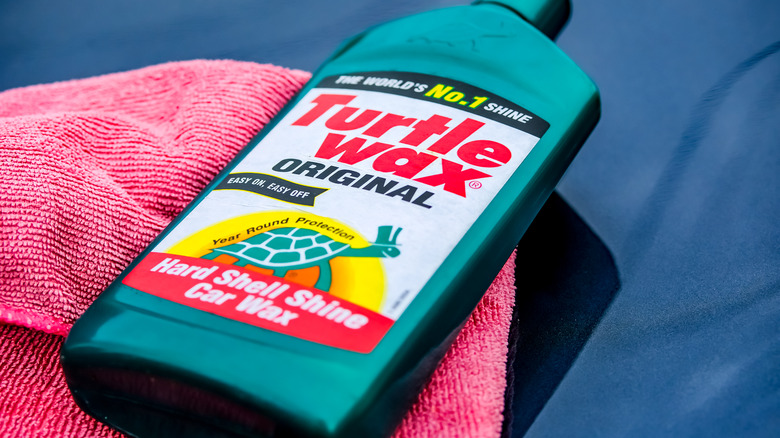Cleaning Your Faucets Requires A Trip To The Auto Body Store
When it comes to function for the exterior of your vehicle, car wax pulls double duty. It enhances the look of your car by filling in any surface scratches, giving it a sleek, shiny appearance, while it also provides a layer of protection from smudges and stains. But this automotive product doesn't need to be reserved for cars only: Car wax can also help shine up the faucets in your home.
Using car wax on your home's faucets works in exactly the same way: It improves the appearance of your fixtures and seals and protects them from corrosion, water stains, and mineral buildup caused by hard water deposits.
When it comes to faucet application, car wax is beyond simple to use. Just make sure your fixture is streak-free and fully dry before applying your waxy coating. Using a damp microfiber cloth, apply a small dab of car wax to the entire metal surface of your faucets. Give the wax a few minutes to dry and do its magic, and then buff it away (always remembering to buff in the direction of the grain) until the fixture sparkles like a diamond.
First, a few safety measures
Note that car wax contains both oils and solvents, so it's important to wear protective gloves when using it. Common natural waxy components in car wax include carnauba wax and beeswax, which are responsible for creating the protective layer of luster, and are both suitable for use on stainless steel surfaces, from faucets and fixtures to appliances (and of course, your mode of transportation).
Still, always do your due diligence and read the "list of ingredients" located on the back of the packaging. Also, if it's still in your possession, consult your faucet's user manual. This is because, as Consumer Reports notes, some car waxes contain abrasives only meant for specific surfaces. In terms of consistency, hard waxes tend to last longer and give you more bang for your buck because of the less-is-more approach. Although liquid and spray-on wax are both easier to apply, a bottle may not last as long because it's easy to accidentally over-squirt.
Lastly, always use a soft cloth to clean and buff any stainless steel surface. Microfiber is your best option, not just because of its universality (it works well for dusting and cleaning messes, too), but because it absorbs any and all excess moisture, leaves a streak-free shine, and won't scratch or ding your faucet fixture.
The new defender of shiny faucets
As mentioned, when it comes to your faucet, car wax works by creating a water-repelling barrier that protects against soap scum, hard water corrosion and/or calcium deposits, and water staining. It also helps prevent mineral buildup, makes it difficult for dirt and fingerprints to stick to a faucet's surface, and even helps prevent rust.
As with your car's exterior, car wax should only be applied after your faucet is clean and has fully dried. Any moisture will prevent the wax from creating a secure bond, resulting in a smudgy, uneven finish, which will mean needing to remove the waxy coating from your faucet and starting all over again from square one. Do it once, and do it right ... until it's time to repeat the buffing process, which Plumbed Elegance recommends you do every four to six months.
If you're worried about wiping off your newly protected faucet, don't be. Once it's been dried and buffed to a shine, the protective coating should remain unscathed and left to do its job. Any dirt or accidental water splash can easily be wiped away with a soft cloth.


